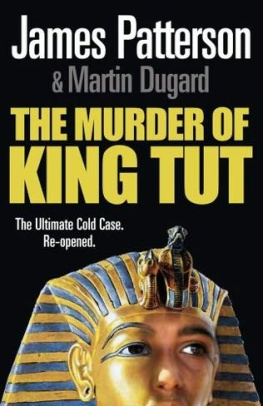Chapter 1
The city of Reno, Nevada, the seat of Washoe County, is pleasantly situated along the banks of the Truckee River, smack-dab in the middle of where Interstate 80, which runs east and west, and U.S. Highway 395, which runs north and south, intersect. Known as the Biggest Little City in the World since 1928, when the two-lane highway that enabled travelers to get across Donner Summit to California was paved, Reno has long been the redheaded stepchild of legalized gambling in the Silver State. Located in the northwestern corner of the state and barely a stones throw from scenic Lake Tahoe, with all its splendor and idyllic beauty, Reno is less than an hours drive from the recently relocated and reopened world-famous Mustang Ranch. A longtime thorn in the side of at least one state legislator, the brothel is a business that nonetheless captures an attractive share of tourist money from men who enjoy cavorting with prostitutes, some of whom come to Reno for that purpose only. Reno is often viewed as being more peaceful and adorned with greater variations of scenic beauty than its glitzier asphalt jungle cousin, Las Vegas, a days drive to the south. Sometimes viewed as a miniature version of Las Vegas because it shares many of the same amenities as its cousin, such as resort hotels, casinos, buffets, and wedding chapels, Reno is also a major warehouse and distribution center for the region. Named in honor of Major General Jesse L. Reno, a Union officer who was killed during the Civil War, the city has grown steadily since the arrival of the railroad in 1868the same year that it was foundedto become the states third-largest city, behind Las Vegas and Henderson, with a population greater than 210,000.
Situated some 4,400 feet above sea level in a high desert valley, Reno is conveniently located twenty-six miles from the state capital, Carson City, which is also home to the U.S. Mint. Many of the states legislators and other elected officials, as well as state employees, make their home in Reno and commute to the state capital. Its growing economy in recent years has resulted in considerable new home construction throughout the metro area, and the so-called progress has brought with it a sizeable increase in its real estate prices. Year-round recreational activities, such as fishing, water and snow skiing, swimming, and parasailing, to name a few, abound, and over time, Reno has expanded upon its cultural base in an attempt to provide outlets besides gambling for its residents. There is an art museum there, a pops orchestra, a botanical garden and arboretum, and Reno is home to the Nevada Shakespeare Company. Unfortunately, Reno is also known as the setting for one of the most diabolical and cold-blooded, not to mention cruel, murders the state has ever seen.
A light summer breeze blew gently through the Meadows subdivision, a few miles southeast of Reno, less than an hour after sunrise on Saturday, July 8, 2006. At a pleasant 64 degrees, it was partly cloudy that morning, but there was no chance of rain. With an average of only 4.5 inches of precipitation annually, it doesnt rain much, ever. From the right vantage point, portions of the Sierra Nevada mountain range could be seen jutting above the horizon to the west. Birds had come to life and could be heard chirping their early-morning music throughout this relatively new, somewhat upscale community, where many young and middle-aged professionals and their families made their home. The houses were mostly of the cookie-cutter variety that developers seemed so keen on exporting in recent years from Southern California to their neighbors in nearby states. The original purchase price tag ran about $300,000. The price of the same house in another major West Coast city, such as San Francisco or Los Angeles, would easily cost twice that much. The location was close to the two major freeways that run through Reno, making it an ideal location for those who work in the city or commute to the state capital despite the bumper-to-bumper traffic during rush hour. The houses, typically close to one another, were separated by a mix of well-placed green grass and desert landscaping or, in some cases, an attractive mix of both. The close proximity of the dwellings also made it easier for neighbors to know each others business, but on the upside, it also made it easier for residents to look out for one another.
Otter Way, located just off South Meadows Parkway and U.S. Highway 395, was a typically quiet street within the Meadows subdivision. Most of the single-family houses on Otter Way were built in 1999, and the community sold out before the houses were even completed, primarily because the location was ideal for those who wanted to enjoy suburban living. Most of the people who live in this community seem to fit into it well; they mesh comfortably with each other, for the most part. One couple who lived on Otter Way, however, didnt quite fit the mold. One neighbor dispassionately characterized them as somewhat of an odd couple, while others chose to keep their thoughts and opinions about their neighbors to themselves. No matter what people thought of that couple, this day in early July would be one that the residents of the Meadows subdivision would not easily forget.
George Reade, a communications supervisor for the Regional Emergency Medical Services Authority (REMSA), was on duty at 6:43 A.M. when the call about a person not breathing was received through Renos 911 emergency communications system. Reades job consisted of overseeing the day-to-day operations of the communications center, and one of his duties included taking some of the emergency telephone calls. Reade, who had been in the supervisory role for two years, had also worked as a communications specialist for that company for three years. On any given day, Reade might take a call involving an auto accident, a cardiac arrest, or even an occasional violent crime. It wasnt unusual for him to work through thirty to fifty calls per day. Even though the phone lines had been busy most of the night, none of the morning or previous evenings calls could top the one Reade took at 6:43 A.M.
Paramedics. Is this an emergency? Reade asked.
Hello. Yes, this is an emergency, the male resident of the house, forty-two-year-old Chaz Higgs, calmly replied.
Whats the address? Reade asked.
Higgs answered, Its in the Meadows housing development. Somethings wrong with my wife. Shes not breathing. I dont know what happened to her.
Shes not breathing at all?
No. Not breathing at all. Im a critical care nurse and Ive already started doing CPR, but I need some help, Higgs replied.
Okay. Were on the way. Whats the phone number that youre calling from?
Higgs gave him the phone number.
And youre with her right now?
Yes.
And youre currently doing CPR?
Yes.
Youre over by Ripple Way?
Yeah. Theres more than one of the same street name. So, if you come into the housing development, immediately turn right and the road will veer around to the left, and were on the third court on the right. Theres a dark blue Dodge Dakota pickup in the driveway. If I hear you coming, Ill come outside.















